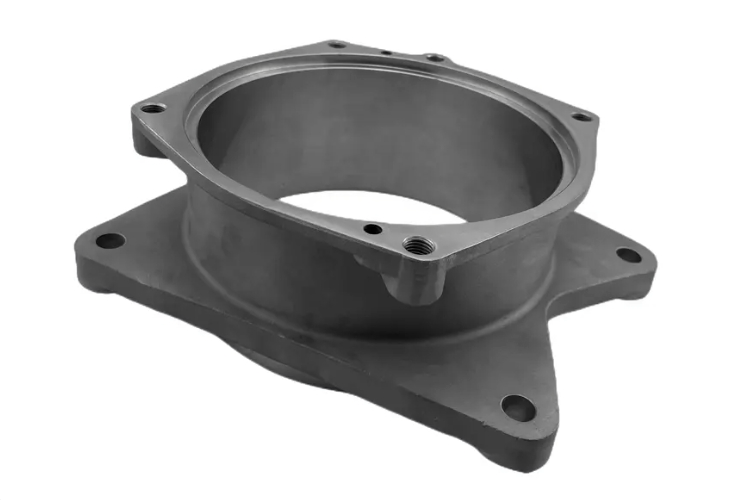Rene N6 Superalloy Casting High-Temperature Reactor Components Company
Introduction
Rene N6 is a single-crystal nickel-based superalloy designed for ultra-high temperature environments, offering exceptional creep resistance, thermal fatigue stability, and oxidation resistance up to 1200°C. As a dedicated superalloy casting company, we manufacture Rene N6 components for high-temperature reactor systems, using vacuum investment casting and directional solidification to achieve low-porosity (<1%) and single-crystal grain integrity.
Our Rene N6 castings are used in advanced nuclear, aerospace, and energy reactors where long-duration exposure to extreme thermal and mechanical loads demands superior material stability.
Core Technology: Vacuum Investment Casting of Rene N6
We utilize vacuum investment casting with directional solidification to produce Rene N6 components with single-crystal grain structures. The alloy is vacuum melted and poured at ~1460°C into ceramic shell molds preheated to ~1100°C. Using a controlled withdrawal rate (1–3 mm/min) in a Bridgman furnace, we create monocrystalline structures ideal for avoiding grain boundary creep and phase instability under high thermal gradients.
Material Characteristics of Rene N6 Alloy
Rene N6 is a third-generation nickel-based superalloy with high γ′ volume fraction and alloying additions for enhanced creep rupture life and oxidation resistance. It is optimized for the most demanding static and rotating parts in hot-section applications. Key properties include:
Property | Value |
|---|---|
Density | 8.86 g/cm³ |
Creep Rupture Strength (1000h @ 1093°C) | ≥220 MPa |
Tensile Strength (at 980°C) | ≥1150 MPa |
Operating Temperature Limit | Up to 1200°C |
Oxidation Resistance | Excellent |
Grain Structure | Single Crystal (SX) |
Rene N6 eliminates grain boundary failure modes, making it ideal for high-stress, high-temperature reactor environments including thermal shields, nozzle structures, and turbine cores.
Case Study: Rene N6 Reactor Component Production
Project Background
A nuclear research institution required ultra-high-temperature turbine nozzles and containment structures for a gas-cooled fast reactor project operating above 1100°C. Rene N6 was selected for its single-crystal performance and resistance to thermal fatigue. Our foundry delivered vacuum-cast, directionally solidified Rene N6 parts meeting RCC-MRx standards with full traceability and low-cycle fatigue testing.
Typical High-Temperature Reactor Applications
Turbine Nozzle Segments: Static components in nuclear reactor turbines exposed to helium or sodium-cooled working fluids at sustained high temperatures.
Thermal Radiation Shields: Structural shields cast in Rene N6 for use in high-flux areas requiring dimensional stability and thermal conductivity control.
Reactor Containment Hot Gas Ducts: Precision-cast sections that direct high-temperature gas to turbine stages while maintaining sealing and structural integrity.
Core Flow Distribution Nozzles: Single-crystal flow vanes and supports that resist creep and microstructural degradation under constant thermal stress.
These components demand microstructural integrity and oxidation resistance beyond the capacity of polycrystalline alloys.
Manufacturing Solutions for Rene N6 Reactor Parts
Casting Process Wax patterns are assembled and invested into ceramic shells. Vacuum melting and directional solidification using a Bridgman furnace ensure single-crystal structure. Mold withdrawal is precisely controlled to eliminate grain boundaries and columnar defects.
Post-processing Hot Isostatic Pressing (HIP) is not typically required due to the SX structure but may be applied for complex geometries. Solution and aging treatments optimize γ′ precipitation for maximum high-temperature strength.
Post Machining CNC machining is used to finish mounting features, interface planes, and sealing surfaces. EDM is used for fine-feature finishing, while deep hole drilling enables precise coolant or gas flow passages.
Surface Treatment Thermal barrier coatings (TBC) or oxidation-resistant aluminide coatings are applied via APS or vapor-phase processing to extend thermal life and prevent scaling or grain growth.
Testing and Inspection All Rene N6 parts undergo X-ray nondestructive testing, CMM dimensional validation, creep and tensile testing, and metallographic evaluation to confirm crystal orientation, γ′ morphology, and surface integrity.
Core Manufacturing Challenges
Achieving and maintaining true single-crystal orientation over large or complex geometries.
Controlling grain defects and stray grain formation in directionally solidified components.
Ensuring oxidation and creep resistance beyond 1100°C during continuous operation.
Results and Verification
Single-crystal integrity verified by Laue diffraction and optical microscopy.
Dimensional tolerance within ±0.05 mm confirmed by CMM inspection.
Creep rupture strength ≥220 MPa at 1093°C validated through long-term stress testing.
Excellent surface oxidation stability maintained after 1000+ hour exposure at 1200°C.
FAQs
Why is Rene N6 ideal for single-crystal reactor components?
What casting techniques ensure SX grain integrity in Rene N6 parts?
Can Rene N6 be used in gas-cooled or sodium-cooled reactor systems?
What surface coatings enhance high-temperature oxidation resistance for Rene N6?
What inspection methods confirm single-crystal orientation and creep performance?

